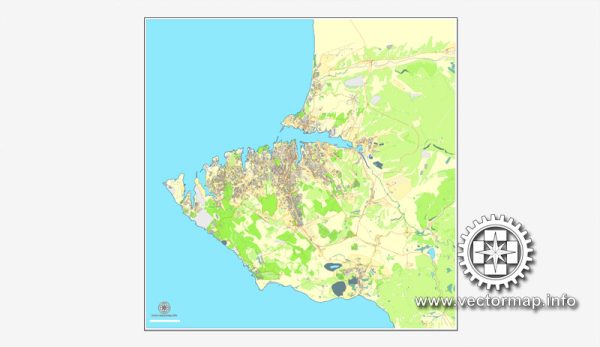Sevastopol is a historically significant city located on the Crimean Peninsula. While I can provide information about its architecture up to my last knowledge update in September 2021, please note that the political situation in the region has changed, and I do not have access to real-time information. Here is a general description of the architecture in Sevastopol up to that point:
- Historical Influence: Sevastopol has a rich history, and this is reflected in its architecture. The city was founded by Catherine the Great in 1783, and it played a key role in the Crimean War and World War II. As a result, the city’s architecture is influenced by a mix of Russian, Soviet, and European styles.
- Military Architecture: Given its historical significance as a naval base, Sevastopol features a significant amount of military architecture. The city is home to numerous forts, batteries, and other defensive structures. The most notable is Fort Constantine, which dates back to the 19th century. These fortifications provide a glimpse into the city’s military history.
- Soviet-Era Architecture: Like many cities in the former Soviet Union, Sevastopol has a range of Soviet-era architecture, characterized by functional, utilitarian design. Apartment blocks, government buildings, and cultural centers built during this period can be found throughout the city.
- Historic Buildings: Sevastopol also boasts a number of historic buildings with architectural significance. The city’s churches, such as St. Vladimir’s Cathedral and St. Michael’s Church, showcase architectural elements of Eastern Orthodox design. The Inkerman Monastery, situated in a cave, is another historic and unique architectural site.
- Waterfront Promenade: Sevastopol’s waterfront features a pleasant promenade with walkways, parks, and open squares. The Nakhimov Square, named after the famous Russian admiral Pavel Nakhimov, is a central point in the city, and it’s surrounded by historic buildings and statues.
- Cultural and Educational Institutions: The city is home to several cultural and educational institutions, including theaters and museums. The Sevastopol Art Museum, for example, is housed in a beautiful historic building and features a collection of art and artifacts.
- Residential Architecture: In addition to its historic and military structures, Sevastopol has a mix of residential architecture, including both older buildings and more modern apartments and homes. The architecture in residential areas can vary widely, from traditional to contemporary styles.
Please be aware that the situation in Sevastopol and the surrounding region may have changed significantly since my last update, and it’s essential to consult current sources for the most up-to-date information on the city’s architecture.


 Author: Kirill Shrayber, Ph.D.
Author: Kirill Shrayber, Ph.D.